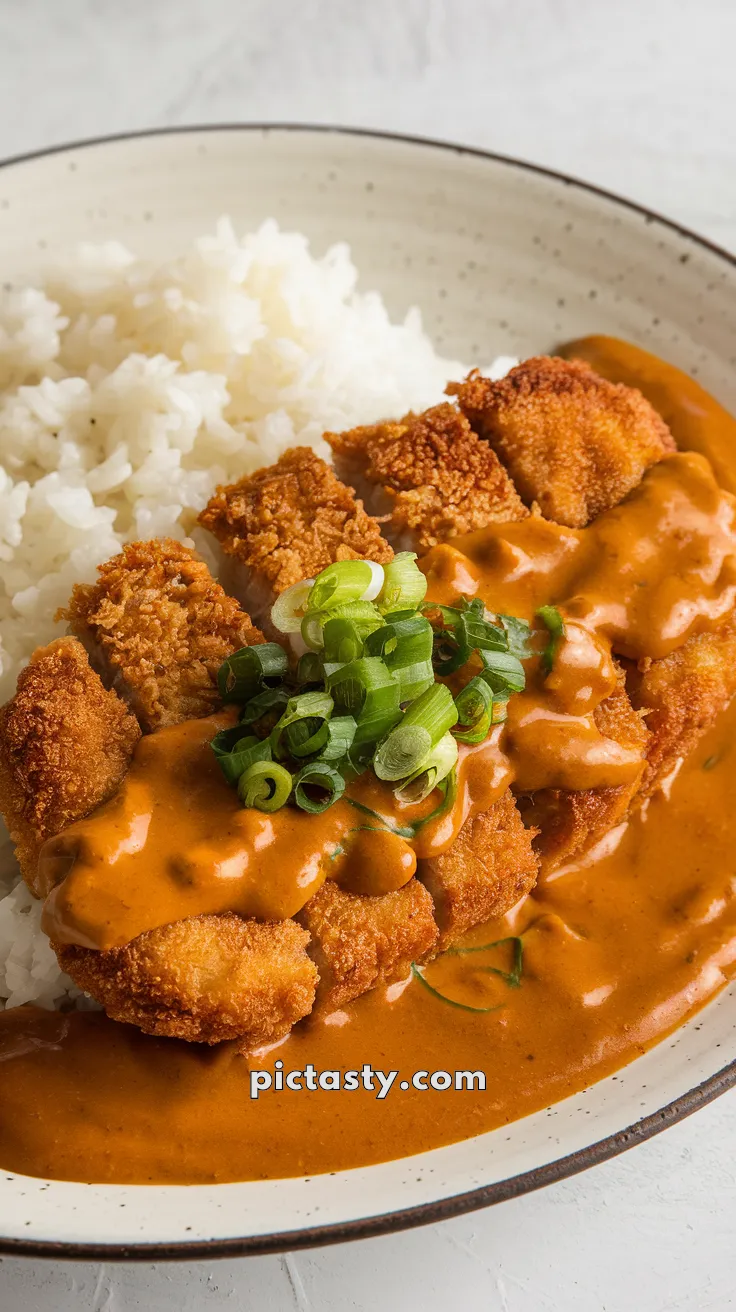Who can resist the delightful fusion of a crispy pork cutlet paired with a delectable, rich curry sauce? The combination is like a symphony – each component playing its part to create a harmonious, savory experience. This is what Katsu Curry, a beloved Japanese dish, brings to the table. But have you ever tried making it at home?
Creating this dish might seem intimidating, given its exotic roots. However, like learning a new language, it’s all about breaking it down into simple, manageable steps. Trust me, once you’ve mastered this recipe, you’ll be serving up plates of Katsu Curry that will rival any restaurant’s rendition and make your taste buds sing!
The Origins of Katsu Curry
Before we dive headfirst into the recipe, let’s take a moment to understand its origins. Katsu Curry is the beautiful marriage of two staple Japanese dishes – Tonkatsu and Curry Rice. Tonkatsu, a breaded and deep-fried pork cutlet, was first introduced in the late 19th century. It was a variation of European cuisine, specifically the French dish known as côtelette.
On the other hand, curry was introduced to Japan by the British during the Meiji era (1868-1912). Over time, it has evolved to suit the Japanese palate, resulting in a milder, sweeter version than its Indian counterpart. Combine these two dishes, and you’ve got yourself a plate of Katsu Curry – a perfect east-meets-west culinary phenomenon.
The Importance of Quality Ingredients
Just like a beautiful painting relies heavily on the quality of its paints, a good dish relies on the quality of its ingredients. For Katsu Curry, it’s essential to source fresh, tender pork cutlets and high-quality Japanese curry roux. The curry roux is the heart of the dish, providing it with its distinctive, rich flavor.
If you’re feeling adventurous, you can even make your own curry roux from scratch. It might be time-consuming, but nothing beats the taste of homemade curry. Additionally, using panko breadcrumbs for the cutlet will not only make it crispy but also give it a light, airy texture that’s simply irresistible.
Getting the Perfect Crisp on Your Cutlet
Cooking a perfect Tonkatsu is an art in itself. The aim is to achieve a golden, crispy exterior while keeping the inside tender and juicy. This might seem daunting, but with the right technique and some practice, you’ll master it in no time.
The secret lies in maintaining the right oil temperature for frying. Too hot, and the exterior will burn before the inside is cooked. Too cold, and the cutlet will soak up the oil, making it greasy. A cooking thermometer is a handy tool to help maintain the perfect frying temperature.
Ingredients
- Pork Loin Cutlets
- Japanese Curry Roux
- Panko Breadcrumbs
- Flour
- Eggs
- Rice
- Vegetable Oil
- Onions, Carrots, Potatoes
Instructions
- Start by tenderizing the pork cutlets. Then, dredge them in flour, dip in beaten eggs, and coat with panko breadcrumbs. Set aside.
- Prepare the curry sauce by sautéing onions, carrots, and potatoes until tender. Add in the curry roux and water, stirring until it thickens.
- Deep-fry the breaded pork cutlets in vegetable oil until golden brown. Do not overcrowd the pan.
- Once the cutlets are cooked, let them rest on a wire rack for a few minutes before slicing.
- Serve the sliced cutlets over a bed of steamed rice, and pour a generous amount of curry sauce over. Enjoy!
Cook and Prep Times
- Prep Time: 30 minutes
- Cook Time: 30 minutes
Tips for Katsu Curry (Pork Cutlet With Curry)
Always let your fried cutlets rest on a wire rack before slicing to retain their juices. Additionally, don’t skip on tenderizing the pork – it makes a huge difference in the final texture. Lastly, don’t be afraid to customize the curry sauce to your liking. You can add more vegetables or even some apple for a touch of sweetness.
Why This Recipe is a Must-Try
This Katsu Curry recipe stands out due to its perfect balance of textures and flavors. The crunchy pork cutlet beautifully contrasts with the smooth, creamy curry sauce, providing an explosion of flavors in every bite. It’s a dish that truly showcases the simplicity and versatility of Japanese cuisine.
Nutrition Information
- Calories: 650 kcal

